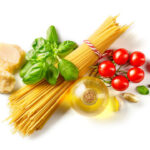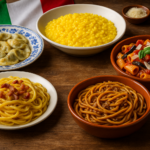The Flavors of Italy: A Journey Through the Regions Traveling through Italy means discovering a world of cultures, traditions, and aromas woven together from north to south, creating a mosaic of unique identities.
Each region preserves a culinary heritage that tells its own story. One shaped by ancient times, hard work, and a deep love for the land.
In this journey, we will explore five regions and their signature first courses. Dishes that are not just simple recipes, but true treasures of memory and passion.
From the rustic and comforting flavors of agnolotti del plin. To the vibrant freshness of trofie al pesto. From the hearty warmth of canederli.
To the delicate sweetness of gnocchi alle castagne from Valle d’Aosta. All the way to the refined complexity of vincisgrassi. Each dish is a story to discover. An experience to live.
Let yourself be guided through this path of authentic flavors and timeless traditions. Immerse yourself in an Italy that speaks through taste, art, and the warmth of its people.















